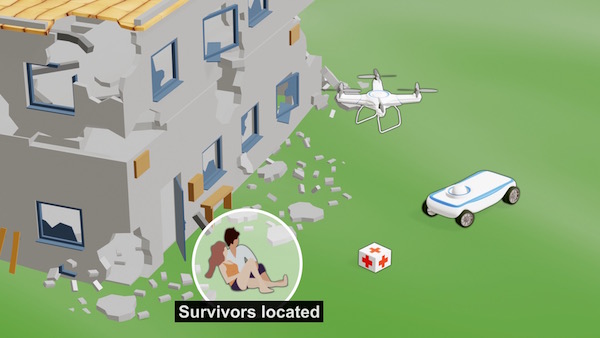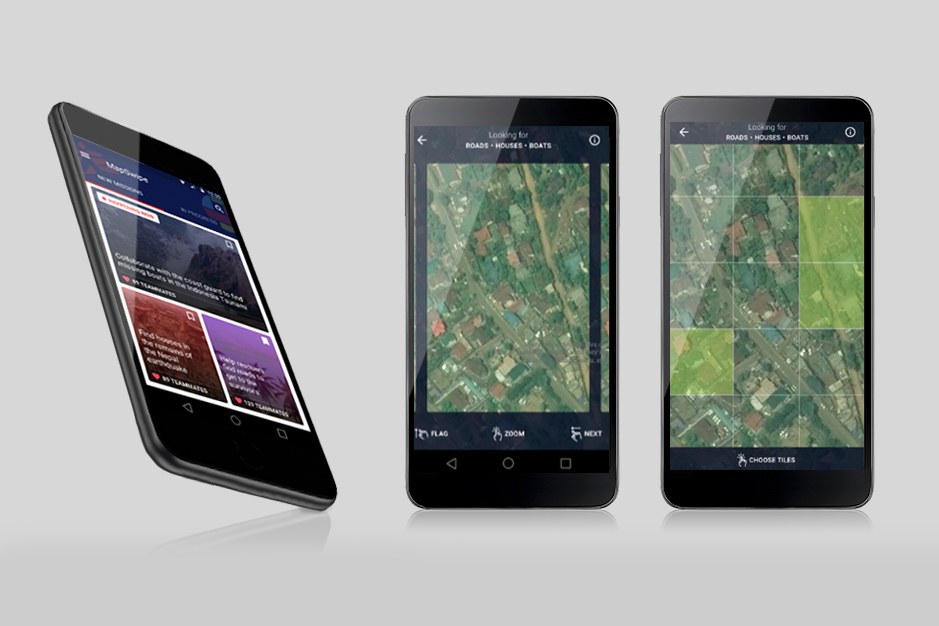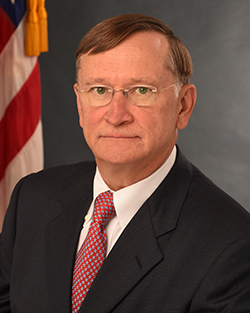 If you or your family were injured during a disaster like a hurricane, earthquake or forest fire, wouldn’t you want your health data to be available to first responders and others who are there to provide care? We thought you might, and we are partnering with the State of California to pilot just such a project. Working at the Office of the National Coordinator for Health Information Technology (ONC), we have had the opportunity to leverage investments in health information technology to spur innovation in public health and preparedness...
If you or your family were injured during a disaster like a hurricane, earthquake or forest fire, wouldn’t you want your health data to be available to first responders and others who are there to provide care? We thought you might, and we are partnering with the State of California to pilot just such a project. Working at the Office of the National Coordinator for Health Information Technology (ONC), we have had the opportunity to leverage investments in health information technology to spur innovation in public health and preparedness...
natural disasters
See the following -
Is the US Finally Ready to Get Serious About Biodefense?
 Biological and other disaster threats - whether accidental, driven by forces of nature, or intentional - pose fairly grave risks to the United States and the world. Situational awareness has been a conspicuous topic ever since the 9/11 attacks and the anthrax scare that followed shortly thereafter. Since then we have experienced numerous disasters: health impacts of major weather events such as hurricanes and earthquakes, new virus outbreaks like Ebola in Africa, raging wildfires on the West Coast (I live in California), and the ever-present threat of pandemic flu which a hundred years ago infected some 500 million people across the globe and killed an estimated 50 million people worldwide, according to the Center for Disease Control and Preparedness (CDC). But since the initial flurry of public health preparedness funds in the ensuing several years after the 9/11 attacks, this topic has not had a high priority at CDC nor the funding necessary to implement it successfully.
Biological and other disaster threats - whether accidental, driven by forces of nature, or intentional - pose fairly grave risks to the United States and the world. Situational awareness has been a conspicuous topic ever since the 9/11 attacks and the anthrax scare that followed shortly thereafter. Since then we have experienced numerous disasters: health impacts of major weather events such as hurricanes and earthquakes, new virus outbreaks like Ebola in Africa, raging wildfires on the West Coast (I live in California), and the ever-present threat of pandemic flu which a hundred years ago infected some 500 million people across the globe and killed an estimated 50 million people worldwide, according to the Center for Disease Control and Preparedness (CDC). But since the initial flurry of public health preparedness funds in the ensuing several years after the 9/11 attacks, this topic has not had a high priority at CDC nor the funding necessary to implement it successfully.
- Login to post comments
Is This The Best Humanity Can Do For The Philippines?
Now that a storm, perhaps the most powerful in recorded history, has struck the Philippines, with winds gusting to 170 mph, a storm surge exceeding 20 feet, and an estimated 10,000 people dead; now that bodies are piling up in such quantities that local officials are digging mass graves [...]; now the world is rushing to send help... Read More »
- Login to post comments
Juliana Rotich Maps The Future With Ushahidi #designindaba
Juliana Rotich, a speaker at Design Indaba 2014, has a remarkable eye. Show her a map of undersea broadband cables connecting to Africa, and she points out that they still follow the sea routes that helped make Africa a continent of colonies not so many decades ago. Read More »
- Login to post comments
Leveraging Artificial Intelligence in Search and Rescue Operations
 Rescue teams descended on the destruction left by Hurricane Michael in October, frantically searching for survivors. But a week later, more than 1,000 people were still not accounted for, leaving families to wait and hope.Drone assistance in natural disaster response now is simplistic at best with a number of hurdles. But new research led by Purdue University professors is working to use artificial intelligence and learning algorithms to create a platform allowing multiple drones to communicate and adapt as mission factors change.
Rescue teams descended on the destruction left by Hurricane Michael in October, frantically searching for survivors. But a week later, more than 1,000 people were still not accounted for, leaving families to wait and hope.Drone assistance in natural disaster response now is simplistic at best with a number of hurdles. But new research led by Purdue University professors is working to use artificial intelligence and learning algorithms to create a platform allowing multiple drones to communicate and adapt as mission factors change.
- Login to post comments
Making Personal Health Data Available During an Emergency
- Login to post comments
Mesh Networks Can Keep People Connected During Natural Disasters
Natural disasters like Hurricane Harvey are a threat not only to human life but also to telecommunication systems. When they go down, entire cities and communities are cut off from each other. Mesh networks, however, can get people connected again, and during emergencies they can be a crucial link to information. "It really all boils down to the 'central point of failure' problem," said Daniela Perdomo. "If the central infrastructure goes down, everyone who plugs into it is also disconnected."...
- Login to post comments
MissingMaps: Chart a Course to Disaster Relief From Your Phone
 Delivering life-saving aid to the middle of a war-zone or disaster area is no easy task. First, there’s the challenge of actually getting there. While navigation software now offers detailed maps of most cities, the uncharted villages and remote conflict zones served by Doctors Without Borders/Medécins Sans Frontières (MSF) are another beast entirely. Even though a remote village or unmarked street might be visible in satellite imagery, it can take MSF mappers months to locate, sketch, and code the kind of detailed digital maps aid workers rely on...
Delivering life-saving aid to the middle of a war-zone or disaster area is no easy task. First, there’s the challenge of actually getting there. While navigation software now offers detailed maps of most cities, the uncharted villages and remote conflict zones served by Doctors Without Borders/Medécins Sans Frontières (MSF) are another beast entirely. Even though a remote village or unmarked street might be visible in satellite imagery, it can take MSF mappers months to locate, sketch, and code the kind of detailed digital maps aid workers rely on...
- Login to post comments
Mobile Phones Are Now As Crucial As Food And Water In Emergency Aid
Foreign aid is streaming into the Philippines from around the world as the news of the devastation wrought Super Typhoon Haiyan spreads, but it’s no longer just food, water and shelter: Before the storm even made landfall, a team from non-profit Télécoms Sans Frontières was on the ground, carrying satellite phones and laptop-sized BGans, which enable voice calls and internet connections via satellite. Read More »
- Login to post comments
Nasa Cannot Monitor Most Potentially Devastating Asteroids
Asteroid 2012 DA14 will not hit Earth when it whizzes past us on Friday - but we may not be so lucky in future, space experts fear. Read More »
- Login to post comments
National Biodefense Strategy: Protecting the Nation Against all Biological Threats
 Today, the White House and four federal departments unveiled a comprehensive National Biodefense Strategy to make America safer against modern biological threats to the United States. In the 21st century, biological threats are increasingly complex and dangerous, and that demands that we act with urgency and singular effort to save lives and protect Americans. Whether a natural outbreak, an accidental release, or a deliberate attack, biological threats are among the most serious we face, with the potential for significant health, economic and national security impacts. Therefore, promoting our health security is a national security imperative.
Today, the White House and four federal departments unveiled a comprehensive National Biodefense Strategy to make America safer against modern biological threats to the United States. In the 21st century, biological threats are increasingly complex and dangerous, and that demands that we act with urgency and singular effort to save lives and protect Americans. Whether a natural outbreak, an accidental release, or a deliberate attack, biological threats are among the most serious we face, with the potential for significant health, economic and national security impacts. Therefore, promoting our health security is a national security imperative.
- Login to post comments
Natural Disasters Become Battlegrounds In Spectrum Fight
While the government seeks to parcel out valuable spectrum to new technologies, TV and radio stations point to disasters like Sandy as proof that broadcasters are as important as ever. Read More »
- Login to post comments
New Report Finds Nation's Public Health Emergencies Are Increasing While State Emergency Preparedness Levels face Challenges
 The report takes an annual snapshot of states' public health and emergency readiness. Authored by TFAH since 2003, it...highlights pressing needs for additional action particularly as weather- related and other public health emergencies become more frequent...It identifies specific action-steps that if taken would improve the jurisdiction's overall level of emergency preparedness, including dedicated funding for health security initiatives, modernizing and supporting technologies and innovations within public health programs, and building multisectoral collaboration and leadership.
The report takes an annual snapshot of states' public health and emergency readiness. Authored by TFAH since 2003, it...highlights pressing needs for additional action particularly as weather- related and other public health emergencies become more frequent...It identifies specific action-steps that if taken would improve the jurisdiction's overall level of emergency preparedness, including dedicated funding for health security initiatives, modernizing and supporting technologies and innovations within public health programs, and building multisectoral collaboration and leadership.
- Login to post comments
New York’s Ongoing Blackout: Hospitals In Lower Manhattan
Long after power is restored from Sandy, the effect of another more-precarious outage is still taking shape: Some of the largest hospitals in lower Manhattan remain shuttered. Other hospitals are scrambling to fill the gap, and concern is rising that the patchwork system can't last for long. Read More »
- Login to post comments
News Participation Starts At ‘Home’
Seemingly every major news event worldwide is heightening participation in news. People are eager to share updates and photos of an unfolding news event, ask questions of media outlets, and share important information. But there are two important aspects to this type of participation [...]. In other words, people write about their immediate world using their ‘home’ or go-to platform. Read More »
- Login to post comments
Notes On The Watershed Post’s Implementation Of Ushahidi’s Crowdmap
This fall, we decided to use a Ushahidi’s hosted Crowdmap platform to organize our coverage of Sandy in the Catskills. Here’s a list of what worked and what didn’t... Read More »
- Login to post comments